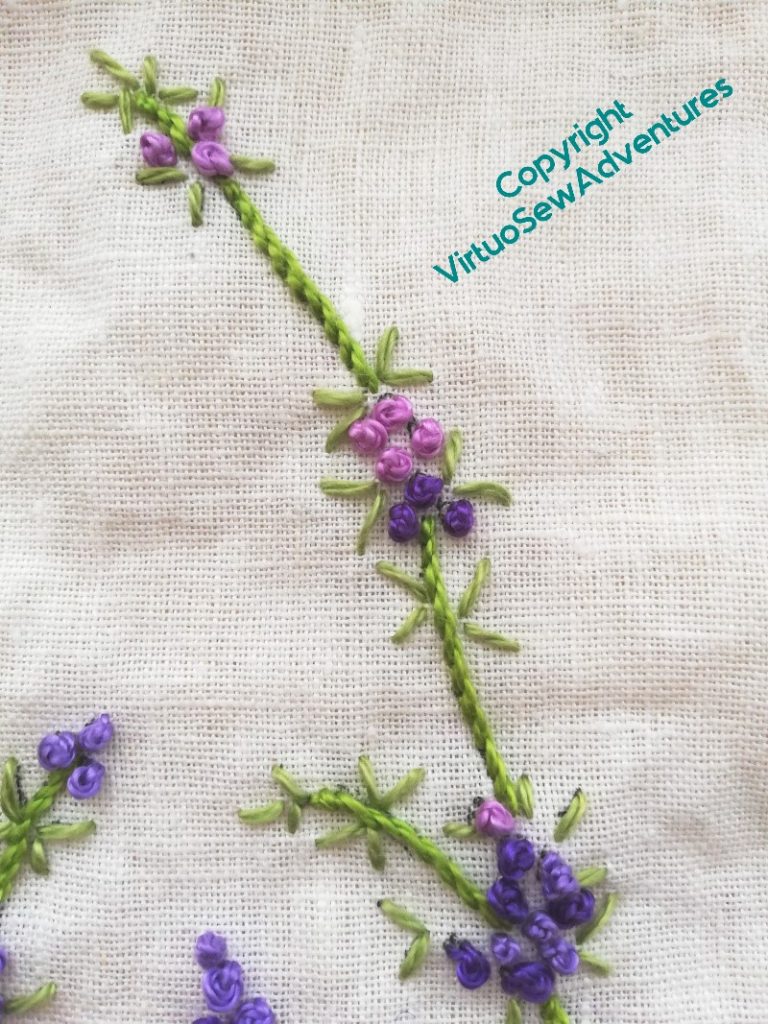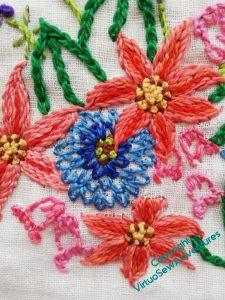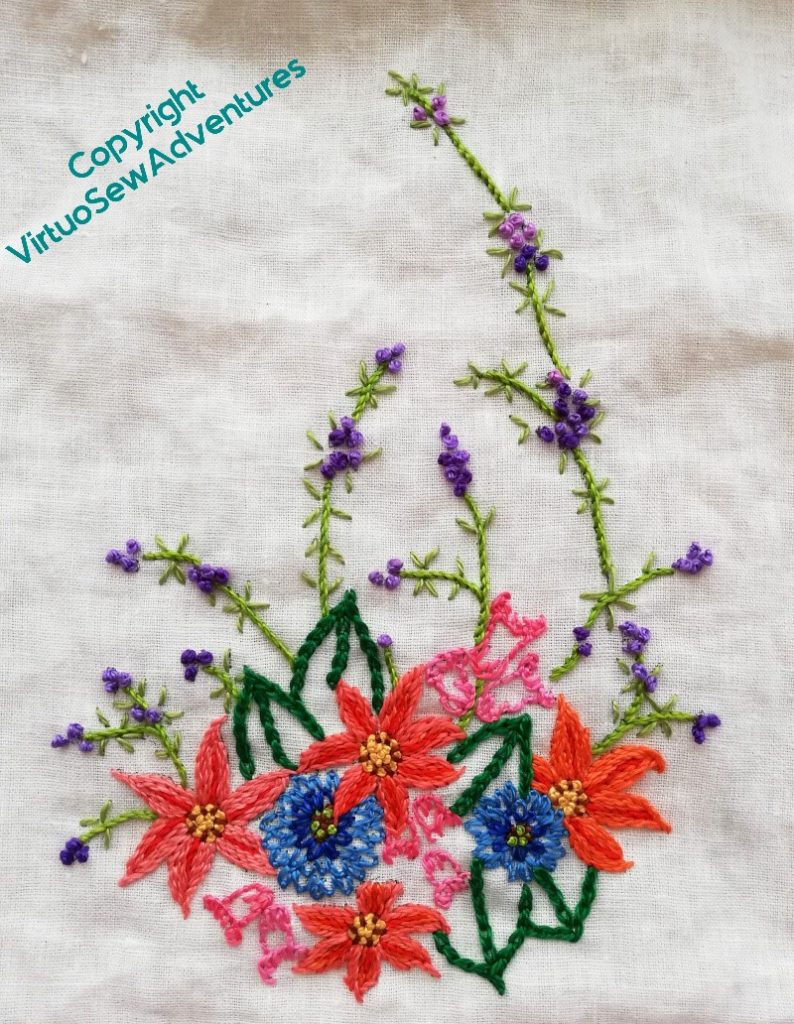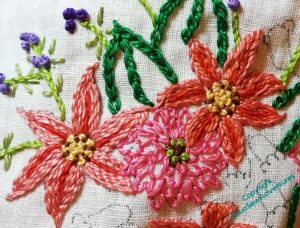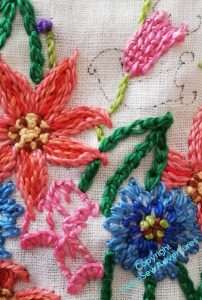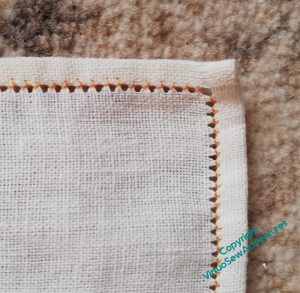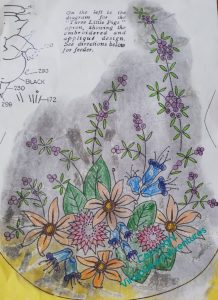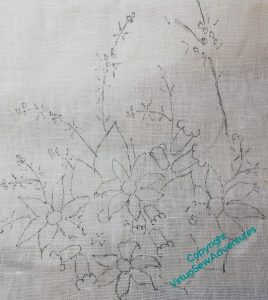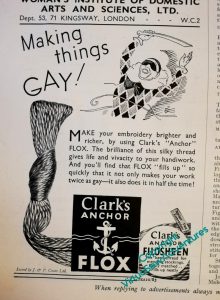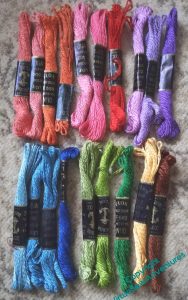Tag: Anchor Flox
Playing with Flox 4 – finish
I worked both ends of the table runner at the same time, because I thought that would enable me to see the whole thing as a single piece, rather than two pieces the same. As I’ve said many times, I have a real problem with repeating motifs, and this is one way I try to trick myself into not seeing the repeats, as it were.
The other thing I did was to put the stems in quite early on in the process. Partly because it was an easy choice to make, and partly because one of my other discoveries over the years is just how much different it makes to the sense of making progress if the design is visually joined up. “Spotty” designs are very discouraging, but if the design elements are linked, somehow progress is easier to see.
In the picture here, you see most of the decisions I made for the main section. Each of the orange petalled flowers uses a different combination of the several orange threads I had in my bundle, which turned out to be just as well, as it makes it look deliberate while reducing the terrors of playing Thread Chicken.
I also learnt from the first frilly flowers and when I reinstated them in blue, I used two shades, which makes for a much lighter and less blocky look.
The two shades of pink in the bell flowers also help to make the whole thing a bit less monolithic. It’s just as well, because the weight of the thread does make the stitching very emphatic.
So, it’s finished, although yet to be pressed owing to the fact that the ironing board bites and I’m rather fighting shy of it at present.
My suspicion, based on my experience with Kai-Lung, is that had I been able to use the original transfer, the design would have been larger, making it maybe possible only to do one end of the table runner, but also changing the relative scale of design to thread. The design is a little small for the thread, so when I come to use up the leftovers on something else, I must remember to enlarge whatever I use. I will just have to be ingenious with my colour distribution!
Playing with Flox 3 – a couple of missteps
Flox is quite an odd thread to use. It’s tough and almost wiry. I love the shine and brilliance of the colours, but even the fairly loosely woven fabric I chose was a little bit too closely woven for the thread. I had rather a battle with it, and it was a bit tricky to find stitches I liked the look of. I’ve ended up using a very small selection of stitches – chain stitch, stem stitch, French Knots, and fly stitches.
The pink fly stitches on the frilly flower, I decided, were a bad choice. I’ve no quarrel with the stitch, but pink beside the apricot/ orange of the six-petalled stitches looked wrong, too congested and overheated and all in all, Just Wrong. Amid much muttering, and no little anxiety (dear heaven, I’m not used to playing thread chicken to this extent any more!!), out they came.
I replaced them with two shades of blue – much better!
The final flowers were the bell shaped flowers. I did wonder about working them with a full-coverage stitch, such as Romanian Couching or something like it. You can see in the picture at the right that I tried a fully stitched bell. That came out two. But then I discovered that my two pinks were slightly different shades, like the oranges. So I’ve deployed the two shades to eke out my thread a little.
I did the same with the six petalled flowers – each of the four is a different combination of thread shades.
Playing With Flox 2
I found a suitable – fairly loosely woven – fabric, and evened up the edges (a lot of unravelling happened!), then hemstitched around the whole thing. In the past, I’ve done the hemstitching last, but as I had a few occasions coming up on which I had time to myself, in public, in which stitching might enable me to be usefully occupied and not loom at people, I thought this was a good use of my time. One reel of cotton, my knitter’s captive blade, and a needle – no other equipment needed, and no risk of losing any of the precious Flox!
Then I did a colour plan for the chosen design. I don’t usually plan pieces like this so much in advance, but since I have limited thread to work with, I picked out a crayon for each colour I had, and had a go. The background is blackened because I first tried to used prick and pounce to transfer the design. It didn’t at all – possibly because the fabric is too loose and all my pounce ended up in gaps rather than on threads. The next attempt was a transfer pencil. That didn’t work either, not at all, no sign of transfer of anything. I wonder whether transfer pencils degrade with time?
So then, which much muttering, I moved on to my cheap and nasty LED lightbox substitute. If I ever find an old-fashioned one I shall leap upon it, LEAP, I tell you.
You can see that I didn’t transfer all lines in all detail. This is a legacy of the Stitch Off, and a result, also, of the efforts I’ve been putting into painting and sketching over the years. This sort of design doesn’t rely on precision, all of the charm of it comes from the sense of life and profusion, and the fabric and thread are both too chunky to allow for much delicacy. So I’m trying to minimise my reliance on guidelines, and indeed, gradually make the guidance still more minimal. A work in progress, again.
Playing With Flox
Well, if I had paid attention, forty years ago, to the adverts in those nineteen thirties The Needlewoman magazines, I would at least have known that Anchor “Flox” was a twisted, fairly heavy thread. I might also deduce that it was fairly new, because the tone of the adverts suggests that the reader needed to have the idea of it explained. So it is a fairly heavy thread, glossy and lustrous, and brightly coloured, creating bright, impactful pieces for interiors, rather than tiny delicate pieces for baby’s layettes.
I laid out all my colours from the bunches I bought on the Embroiderers’ Guild stall at the Harrogate Knitting and Stitching Show in colour families to see what I had to work with. Bright, colourful, lustrous, yes – yes, all of that. The thread is a bit heavier than the heavy pearl cottons, but the twist is not so tight. I wonder how it will make up? (Apart from “in half the time”!)
Now I look at it in better light, the red is more of an orange, so it’s misplaced, but there’s a fair range of colour here, as long as I’m not going for subtlety..
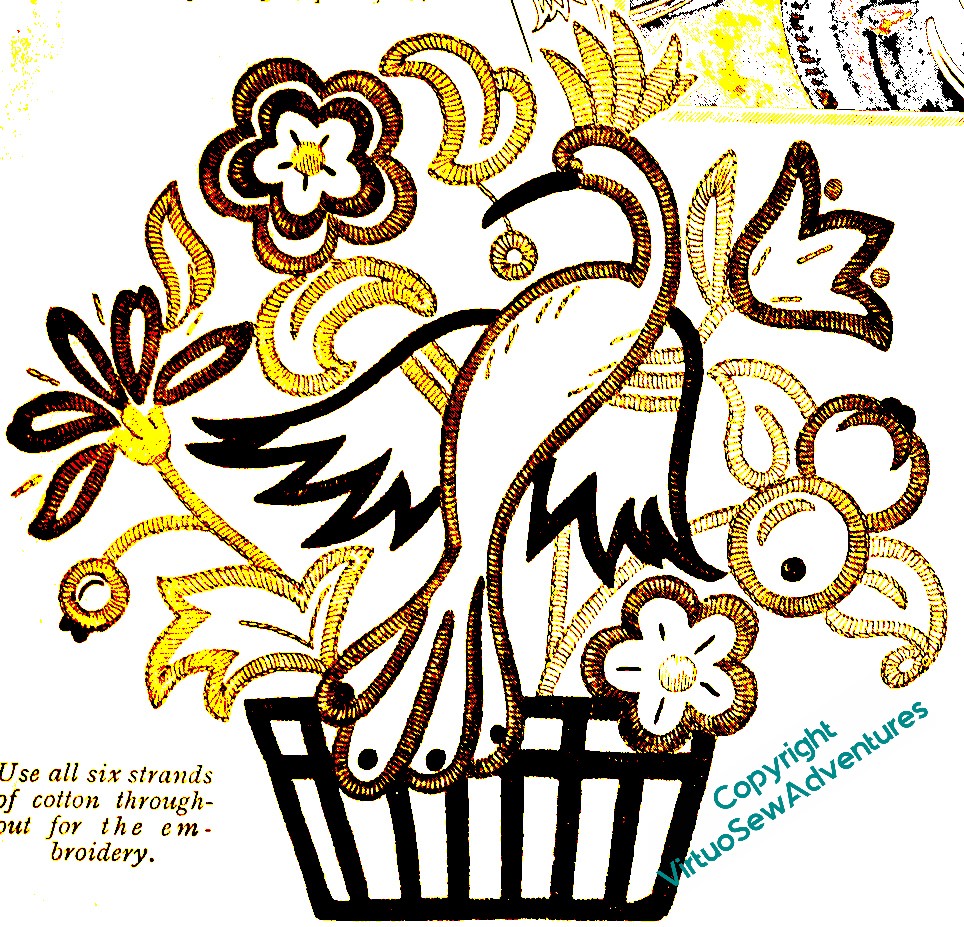
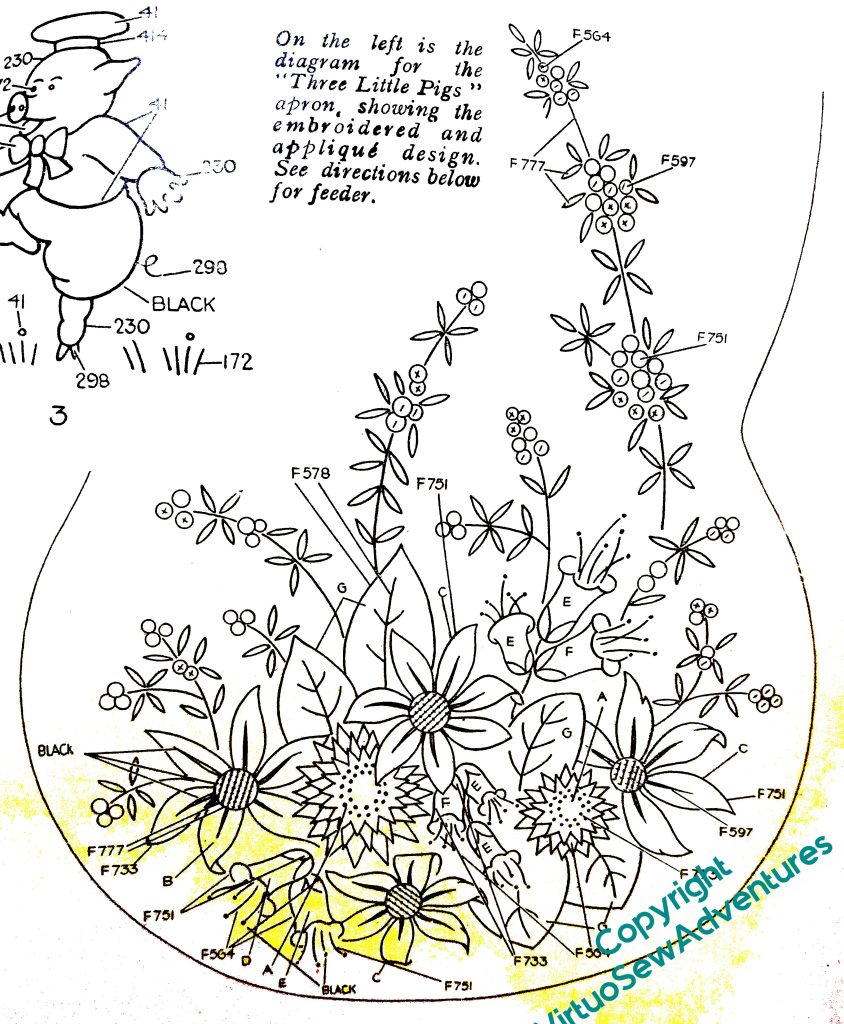
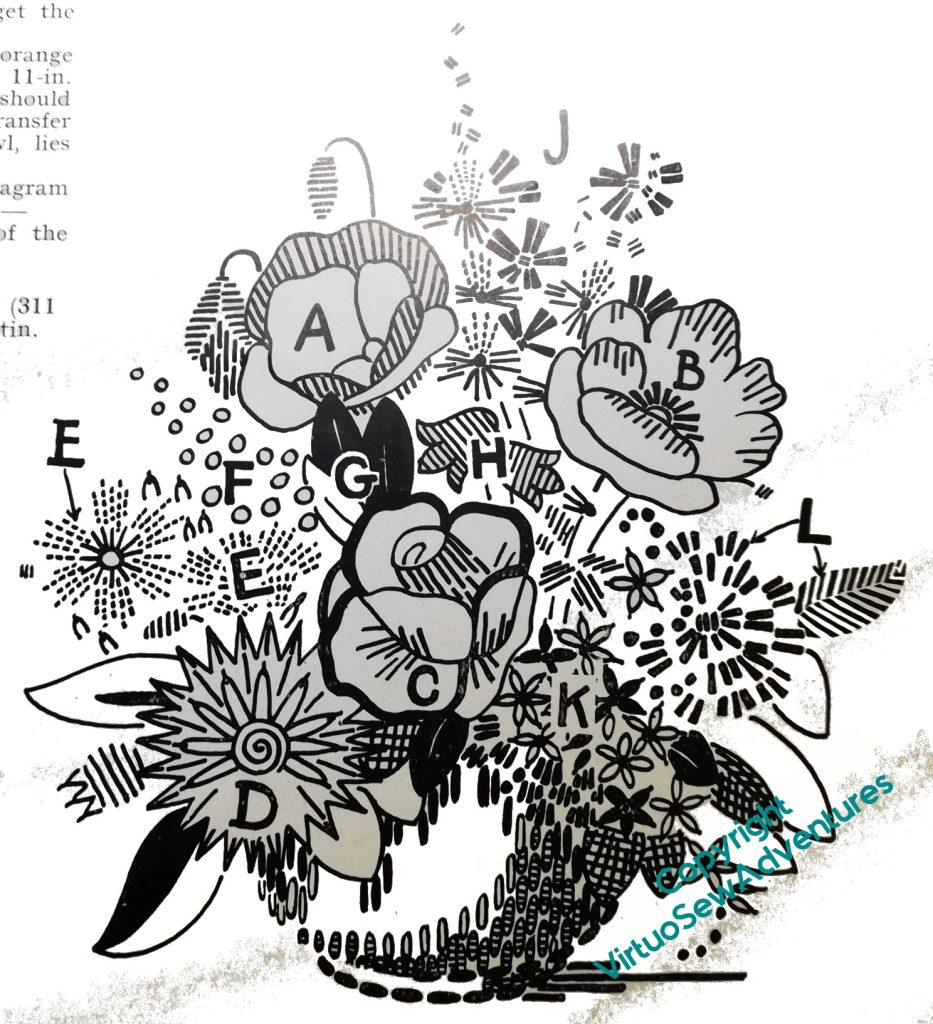
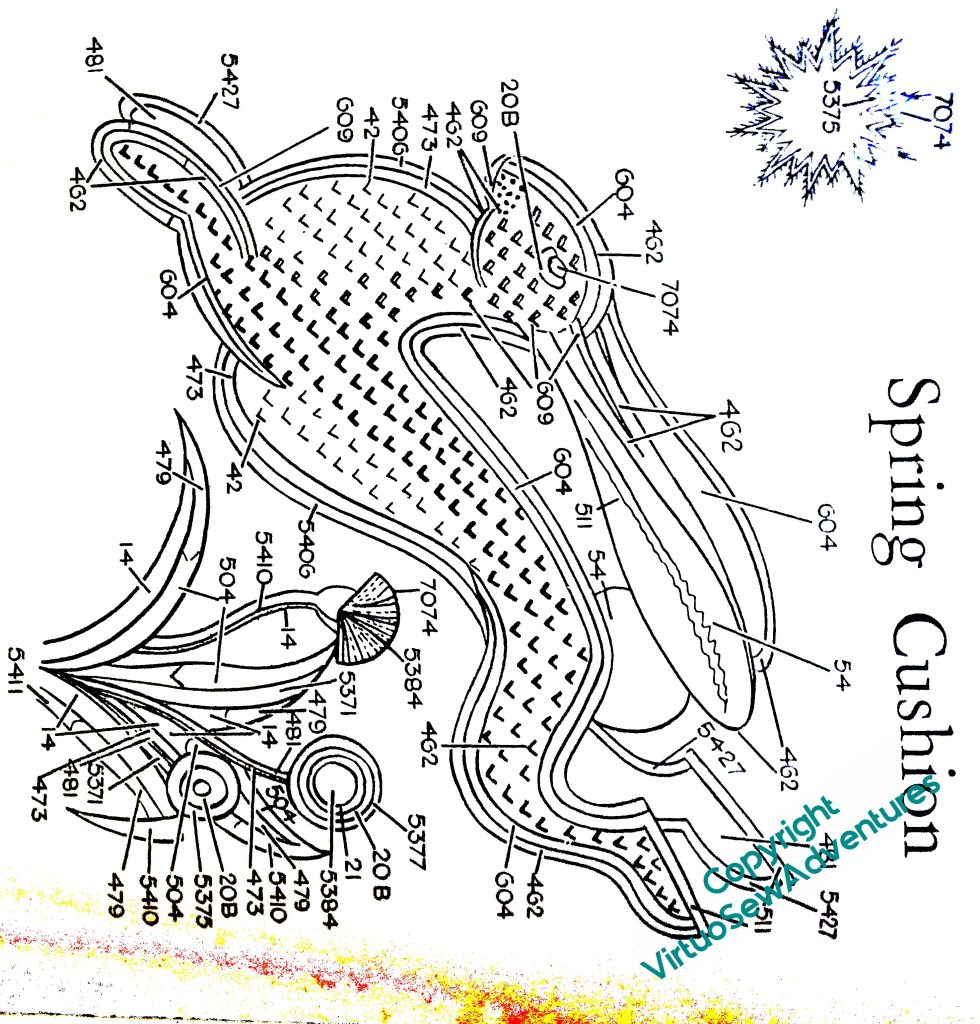
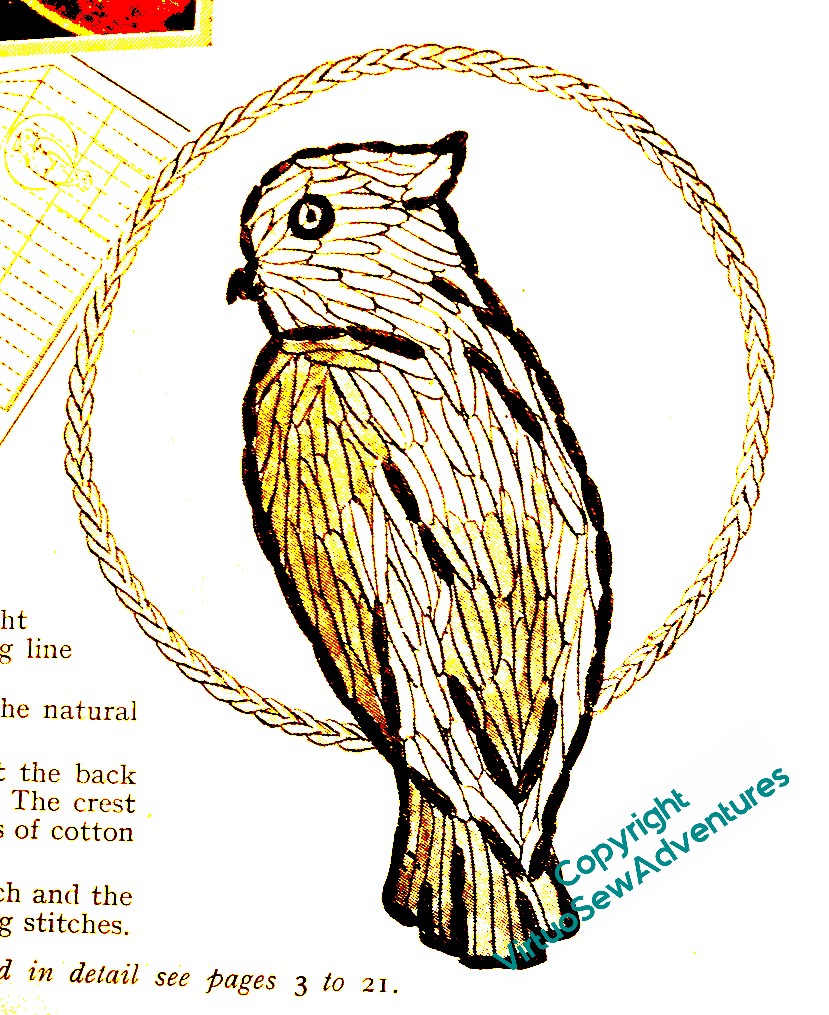
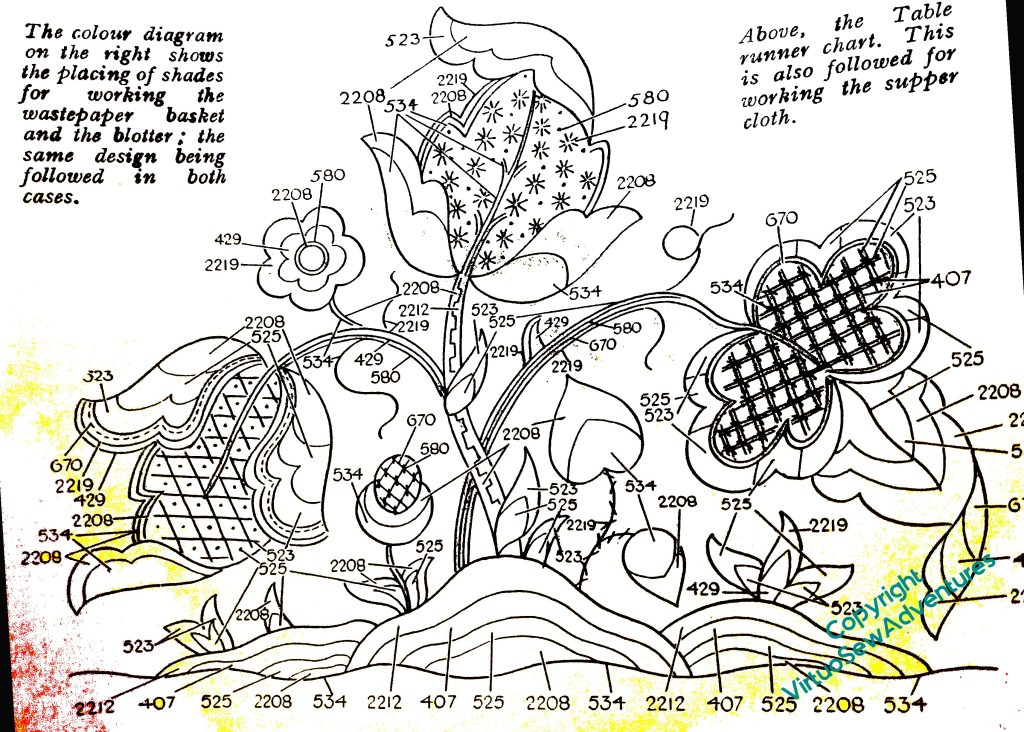
I went through my magazines, to find a selection of designs that were specifically intended for Anchor Flox, but not so huge (the Persian Fantasy Screen was intended for Anchor Flox, and that ends up as five feet by six!) as to demand more thread of each colour than I have.
I’ve decided to do one of the floral table runner designs, the middle of the top row here, because I think it will talk nicely to the Queen Anne style teacloth which is presently gracing a side table in the the living room. After that, if I seem to have enough, I am very tempted by that parrot…

